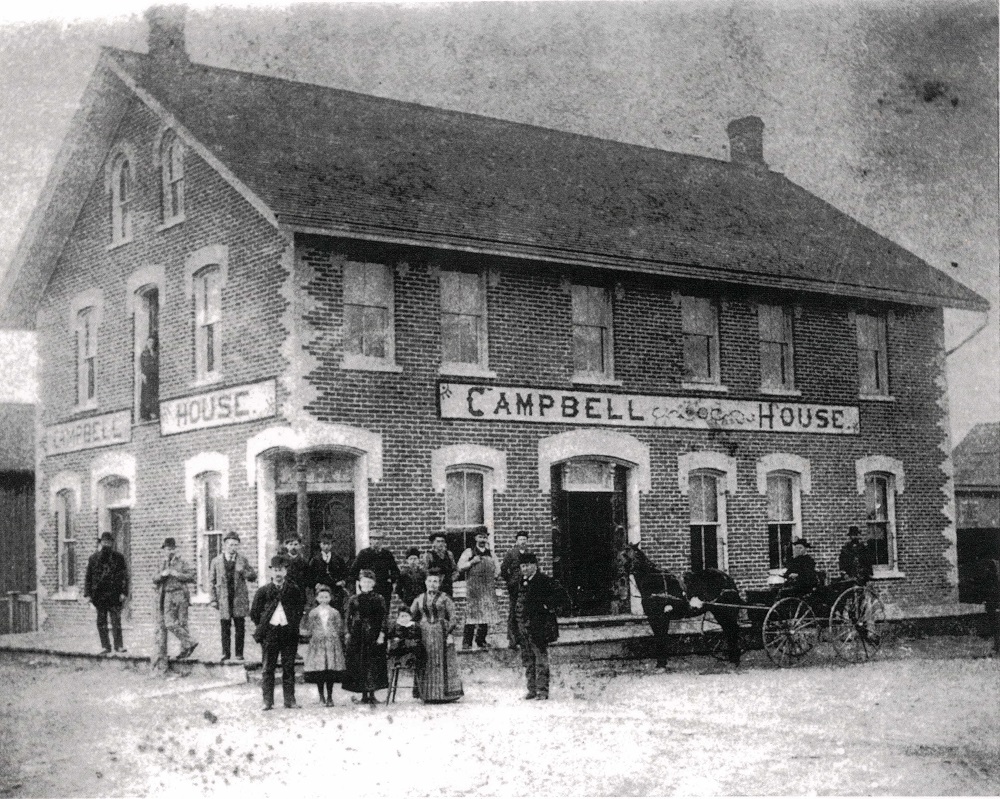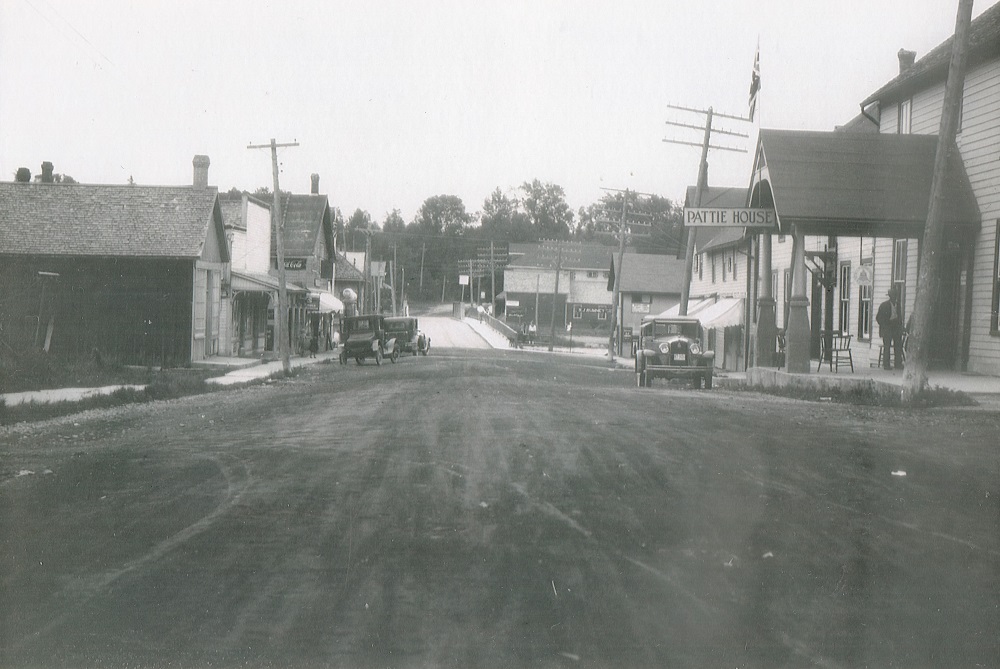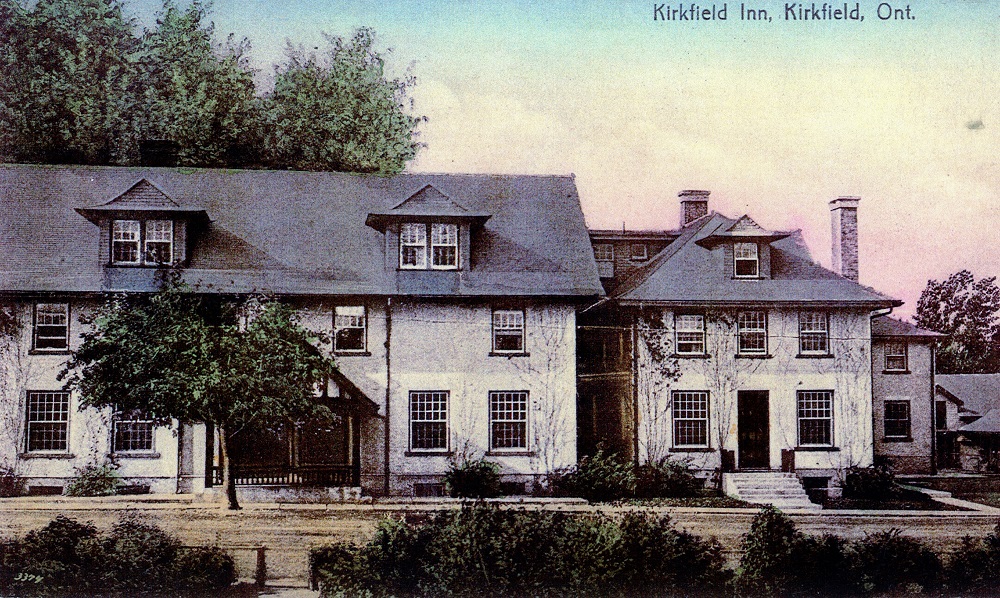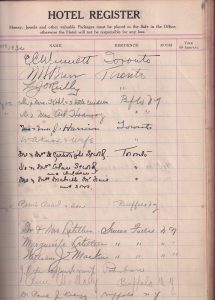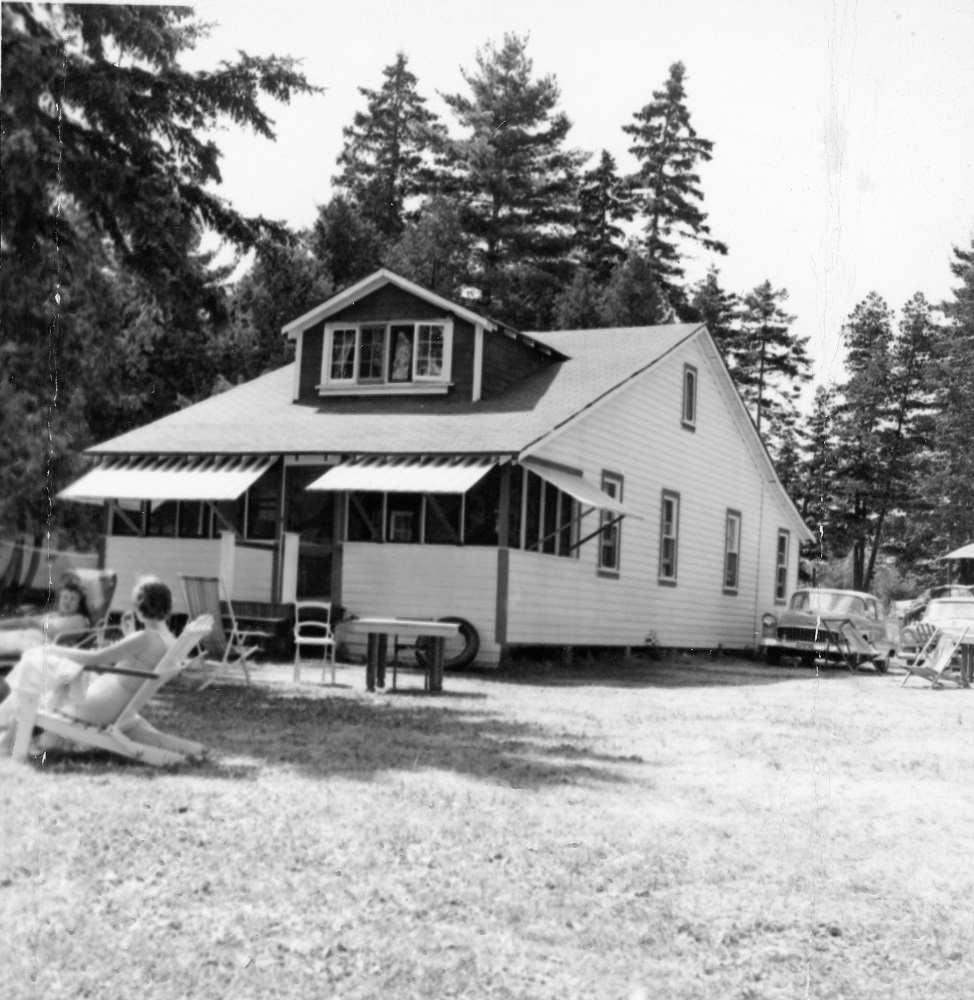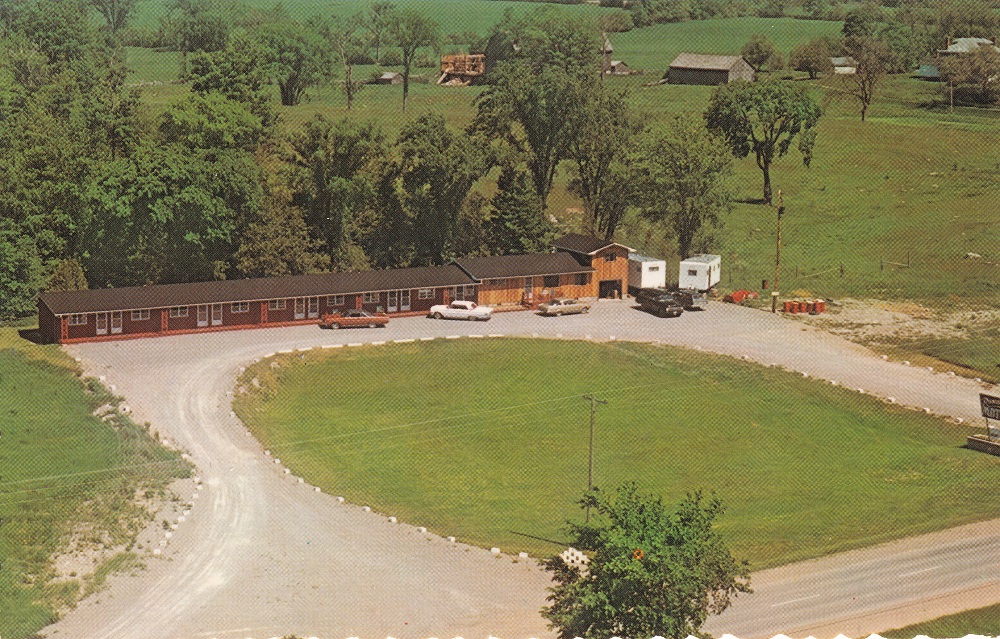Inns and Motels
Growing numbers of summer tourists spurred the growth and development of a thriving hospitality sector in northwestern Kawartha Lakes. From traditional roadside inns to lakeside lodges and ultramodern motels, places of accommodation offered weary travellers a spot to rest and relax.
Among the early hotels in the region were Biddy Young’s Hotel (Bolsover); the Queen’s Hotel (Coboconk); the Campbell House (Kirkfield); and Chirpaw’s Hotel (Victoria Road). They served the needs of commercial travellers coming first by horse-and-buggy, and later by water and rail.
The first hotel in northwestern Kawartha Lakes designed expressly with motorists in mind was the palatial Kirkfield Inn. Funded by Lady Mackenzie, a local philanthropist, the inn opened on Victoria Day of 1913 and was praised as being “one of the finest places of its kind in Canada.” Adjacent to its stables, the Kirkfield Inn sported a modern garage to ensure “proper housing for the cars belonging to automobile parties.”
Although the Kirkfield Inn burned to the ground in 1925, demand for comfortable accommodations scarcely diminished. By the 1930s, there were more tourists venturing into northwestern Kawartha Lakes than there were places to accommodate them. The Civic Holiday weekend of 1939 saw more than one carload of tourists turned away by hotels and lodges that were filled to capacity.
In the north, accommodation was so scarce that private homes were opened up to the travellers and some tourists were glad to sleep on chesterfields and on blankets on the floors.
– Lindsay Daily Post, August 8, 1939
Following the Second World War, farsighted individuals constructed new lodges or purchased and expanded existing ones. Terri Pamenter, whose parents owned and operated Falcon Lodge between Highway 46 and Balsam Lake, remembers how business grew through the 1950s:
Most guests started as ‘drop-ins.’ Folks would drive until they saw a VACANCY sign on the gate and then they would talk to Dad over the gate to see what was available. This was most often on Friday nights. If there was space and the price was right, they would drive down to the available cabin, pay for the night up front and settle in.
Kim Tuckett Remembers Falcon Lodge. Enjoy this video clip with a descriptive transcript.
By the 1960s, the traditional hotels and lodges had been joined by the “motor-hotel,” or motel. Tourists could park steps away from their rooms and enjoy a good night’s accommodation complete with running water and electricity. The motel was the ultimate expression of how dependent postwar tourism was on the private automobile.


